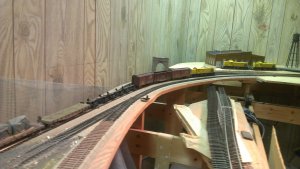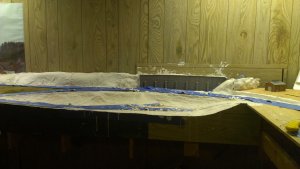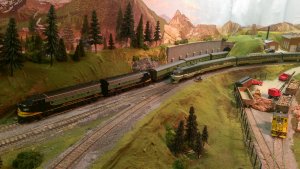Raincoat2
Well-Known Member
Hi, everyone. I'm building my first "real" layout, an HO scale "around the walls" in an 18' x 12' basement room. I've built the support infrastructure and now ready to put on the top. I've watched youtube videos and read articles in mags and online until I'm blue in the face, and totally confused. My question is what to use: plywood only, plywood + foam layer, or just foam layer?? Everyone's got rationales for their approach - all seem to have advantages and disadvantages. I'm stalled in construction right now because of this question, and need to move forward, but I want to get this right from the start. I'm still listening. Any suggestions? Past experiences good and bad?




